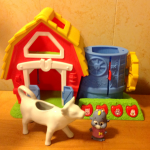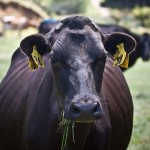
When I started up my blog, dear readers , my daughter encouraged me to join Twitter to help connect with like minded people and also to create interest in said blog. I was skeptical. I thought that Twitter was a silly form of social media. I know, I know, making a judgement without any information-mustn’t do that, Anne. So, I wrote a little bio, clicked the mouse a few times and voila!-I am on Twitter.
There are some images on Twitter of nonhuman animals who are suffering at our hands. I must say, I find these images so hard to look at. Mostly they are posted by well meaning people who are trying to shine a light on these atrocities and to help us all remember the kindness and compassion that lies forgotten under the layers of our long held meat eating traditions.
But the other day, I saw a very disturbing picture of a cow being dehorned. It was graphic, frightening, sad, humbling. The most disturbing part about it was that it was posted by a person who was mocking the cow, the cow’s pain, as well as our efforts to end these barbaric practices. I can’t speculate on this person’s exact motivation for doing this, but I am so saddened by the disrespect shown this poor cow and all other beings who meet the same fate.
I decided that I needed to find out the why of dehorning within the industrialized farmed animal industry.
I found dehorning.com which states on their website that:
Cattle dehorning is a necessary management practice to prevent injury to animals and handlers.”
On their blog, entitled Horn Talk Blog there is a post entitled, Where are approved drugs for dehorning pain? Dave Lucas, the author of this post, written in 2013, states that a recent study disclosed that about 18 percent of dairy farmers use pain management when dehorning or disbudding cows. He also says in the second paragraph,
Food animals like cattle tend to be quite stoic, or seemingly indifferent to pain; currently, no validated methods exist for evaluating pain responses in food animals.”
Next I looked up the official dictionary definition.
The definition of dehorn in the Merriam-Webster Dictionary (online version) is,
1) to deprive of horns 2) to prevent the growth of the horns
I was surprised to learn that the first known use of the word, dehorn was in 1888. I thought this was a fairly new practice born in the era of industrial farming-evidently not.
This is what Wikipedia had to say:
Dehorning, or disbudding, is the process of removing or stopping the growth of the horns of livestock. Cattle, sheep, and goats are often dehorned for economic and safety reasons. Horns can pose a risk to humans, other animals and to the bearers of the horns themselves (horns are sometimes caught in fences or prevent feeding)…. Dehorning is considered by some concerned with animal welfare to be cruelty because of the pain it can cause.
Rationale:
Horns may cause injuries to handlers or other cattle.
Horned livestock take up more space.
Horned livestock may require specialist equipment, such as feeders and cattle crushes.
In some breeds and in some individuals, horns may grow towards the head, eventually causing injury.
Horns may become broken, causing blood-loss and potential for infection.
Horned livestock may become trapped in fences or vegetation.
Remaining horned:
Horned livestock are better able to defend themselves and their young from predators such as wolves and dogs.
Horns provide a secure point for roping or holding the animal’s head.
Horns are traditional in some breeds, and breed standards may require their presence (for example, Texas Longhorn, Highland and White Park cattle).
In some areas horns are of cultural significance, often being decorated or even trained into strange shapes.
Some types of yokes used by draught oxen require the presence of horns.
Dehorning takes time and costs money.
Horns are needed by the animal for thermoregulation and cooling.
Dehorning is extremely painful to the animal.
Annie’s Vegan View
I am struck by how these beings are spoken of as things.
We can all do better. I know we can. Please, let’s do the right thing and stop using all nonhuman animals for our wants, not needs.
When we do, this cruel practice, and others like it, will end.
Therein lies our salvation.
May all beings be happy and free.



Vegucated is a good movie. I won’t say any more; so, no spoiler alert needed. I’m sure you’ll make comments about it in the future and then I’ll add mine.
Dehorning is just one of the many cruel practices inflicted on animals. Tail docking and teeth clipping of piglets are other examples. These are also carried out without anesthesia. The cruelty perpetrated on non human animals by humans is boundless.
Hi Cindy, I look forward to discussing the movie with you.
They say that knowledge is power and I hope this is true. If we continue to learn and to inform about what is happening in the name of nonhuman animals as food, clothing, entertainment, furniture, lab subjects etc. hopefully the penny will drop and we will be a part of ending the cruelty.
Peace, Anne
How wonderful that you joined a vegan Meetup!! I hope you enjoy the group. As for the dehorning – yikes, that is very sad to read about. Celeste 🙂
Thanks Celeste, I am very excited about tonite. Perhaps we can share our experiences about our new Meet Up groups.
Unfortunately, dehorning is the tip of the iceberg, as they say. I guess I can see why people turn away, even though all of these nonhuman animals depend on us not to. So, we will carry on, working to make a difference!
Many thanks and peace. Anne
Thanks for this Anne! I always enjoy reading your well researched articles. These cruel practices sadden me too and the fact that the majority of it is done without anaesthesia I find totally abhorrent. I agree we can do much better but thanks to you and your website educating people, hopefully more of the public will become more aware and these cruel practices might change.
Rachel Weightman
Hey Rachel,
Better late than never. I so appreciate your comments and can’t believe that I missed one. A lot has happened in the AR movement in the last two years and I am so hopeful that these practices and all animal exploitation will be a thing of the past.
Take care,
Anne